Introduction to OpenAI
Introduction to AI
Reinforcement Learning in AI Systems
Reinforcement learning (RL) empowers agents to learn optimal behaviors through trial and error. Unlike supervised or unsupervised learning, RL relies on interaction with an environment and feedback signals (rewards and penalties). The agent’s goal is to maximize cumulative reward over time.
In this guide, you’ll learn:
- Core Concepts
- How Reinforcement Learning Works
- Markov Decision Processes (MDPs)
- Value-Based Methods
- Policy-Based & Actor-Critic Methods
- Applications
- Challenges
- Future Directions
1. Core Concepts
An RL agent interacts with an environment in discrete time steps:
| Term | Description |
|---|---|
| Agent | The learner or decision-maker that selects actions |
| Environment | The system or scenario (real or simulated) with which the agent interacts |
| State (S) | The current configuration of the environment observed by the agent |
| Action (A) | A decision or move the agent makes in a given state |
| Reward (R) | Immediate feedback indicating benefit or cost of an action |
| Policy (π) | Strategy mapping states to action probabilities |
| Value Function | Estimates expected cumulative reward of states (or state–action pairs) |
| Q-Function | A value function Q(s, a) estimating expected reward for action a in state s |
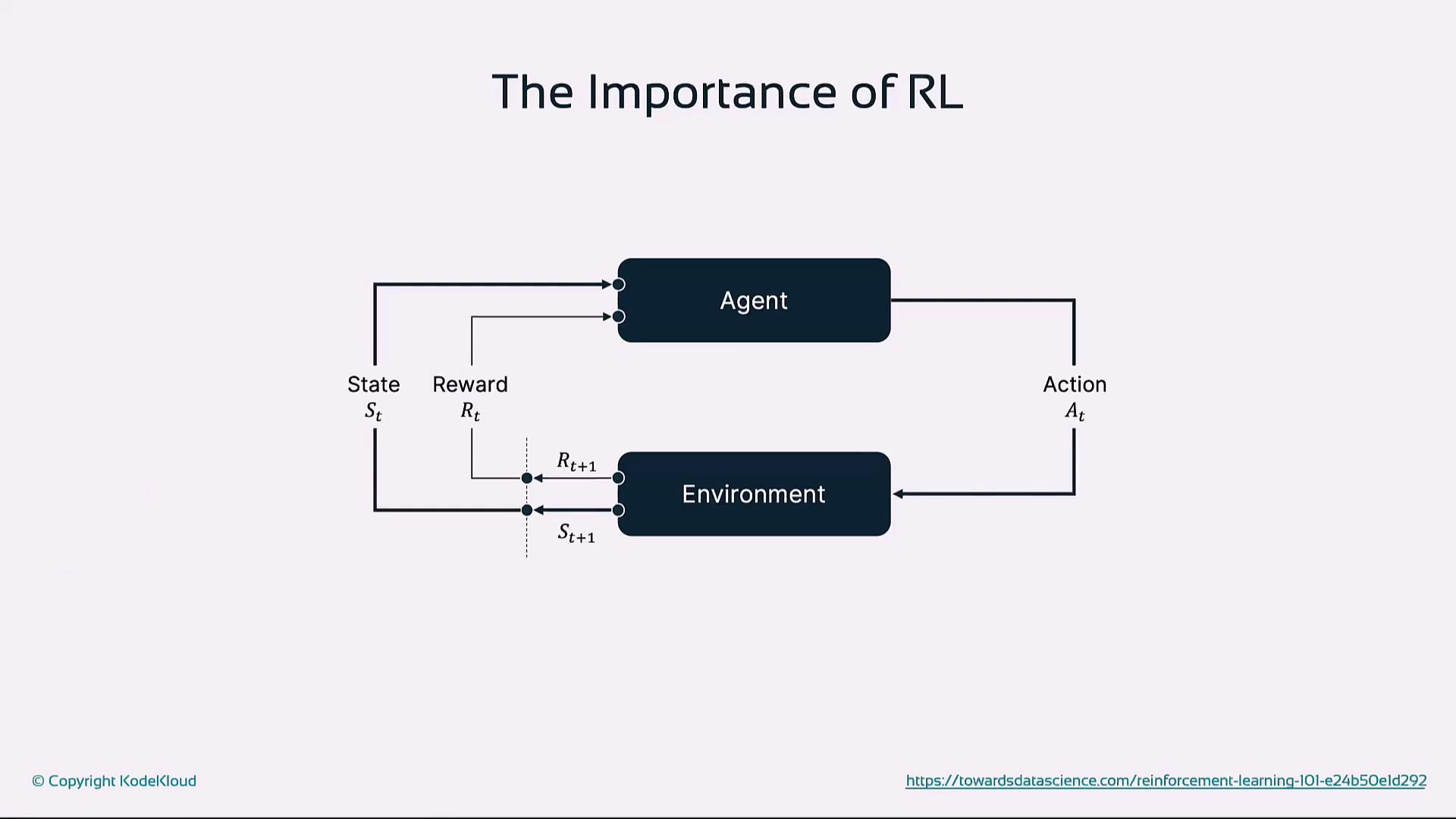
Agent
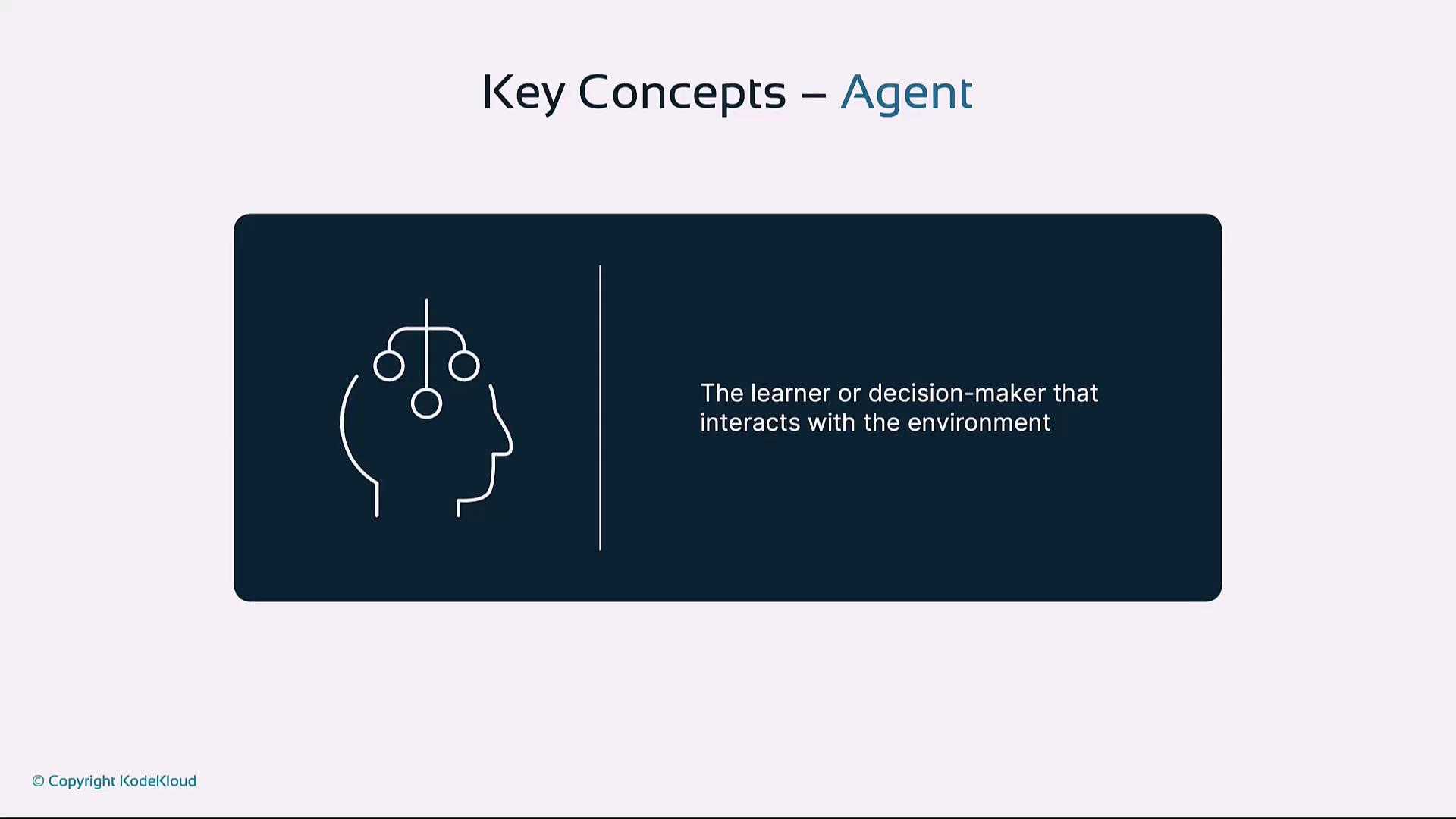
Environment
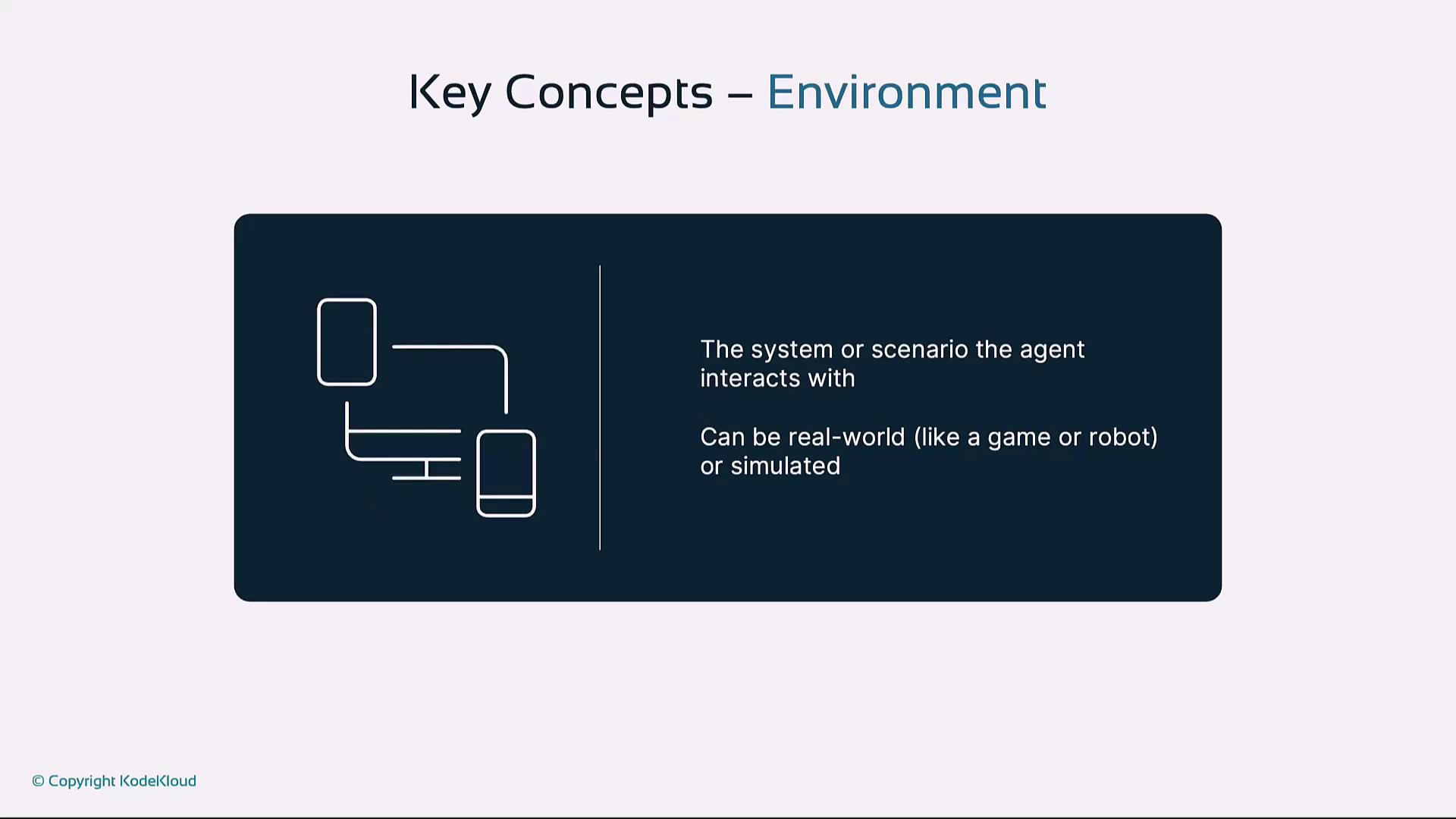
State
![]()
Reward
![]()
Value Function
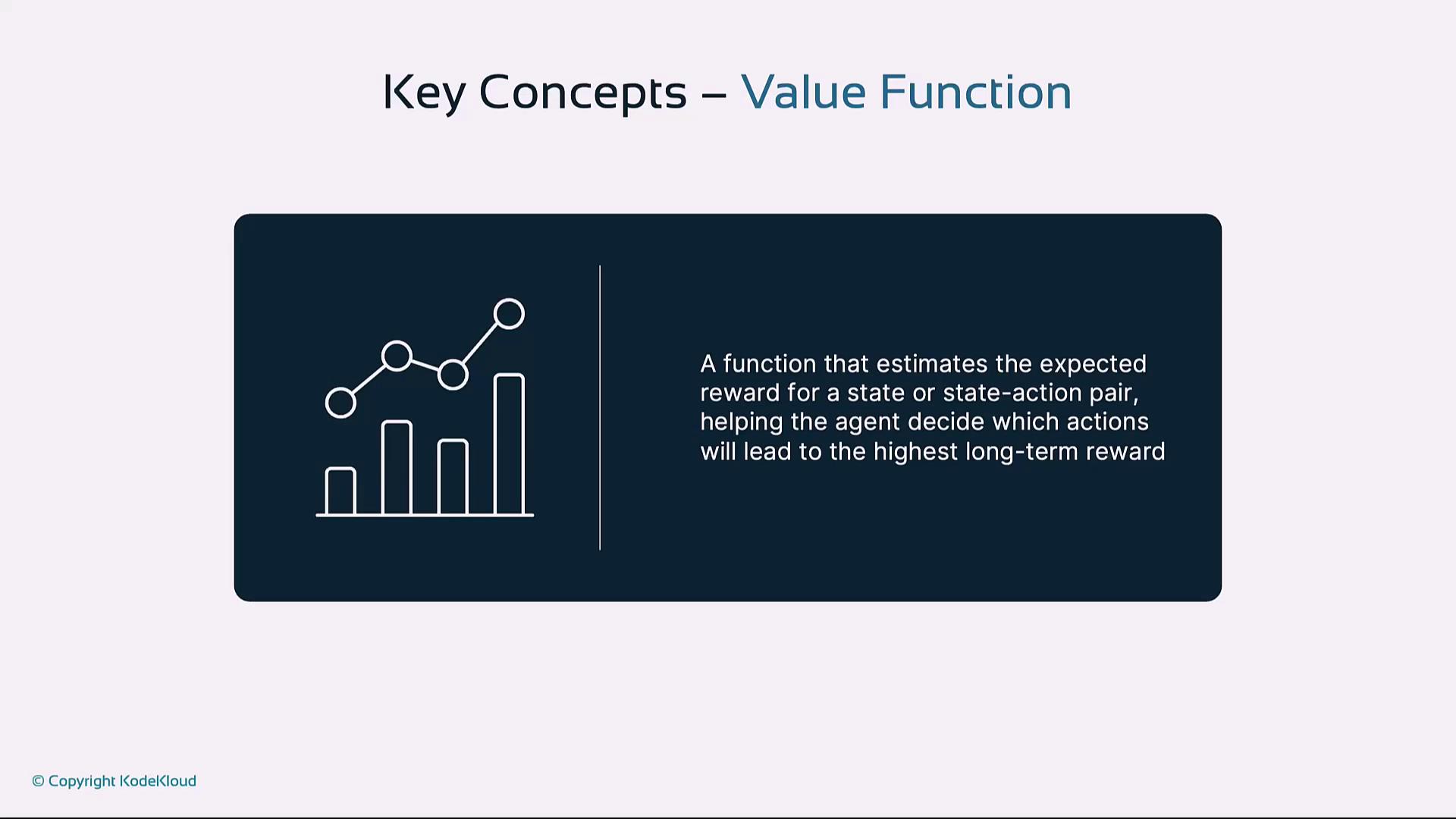
Q-Function
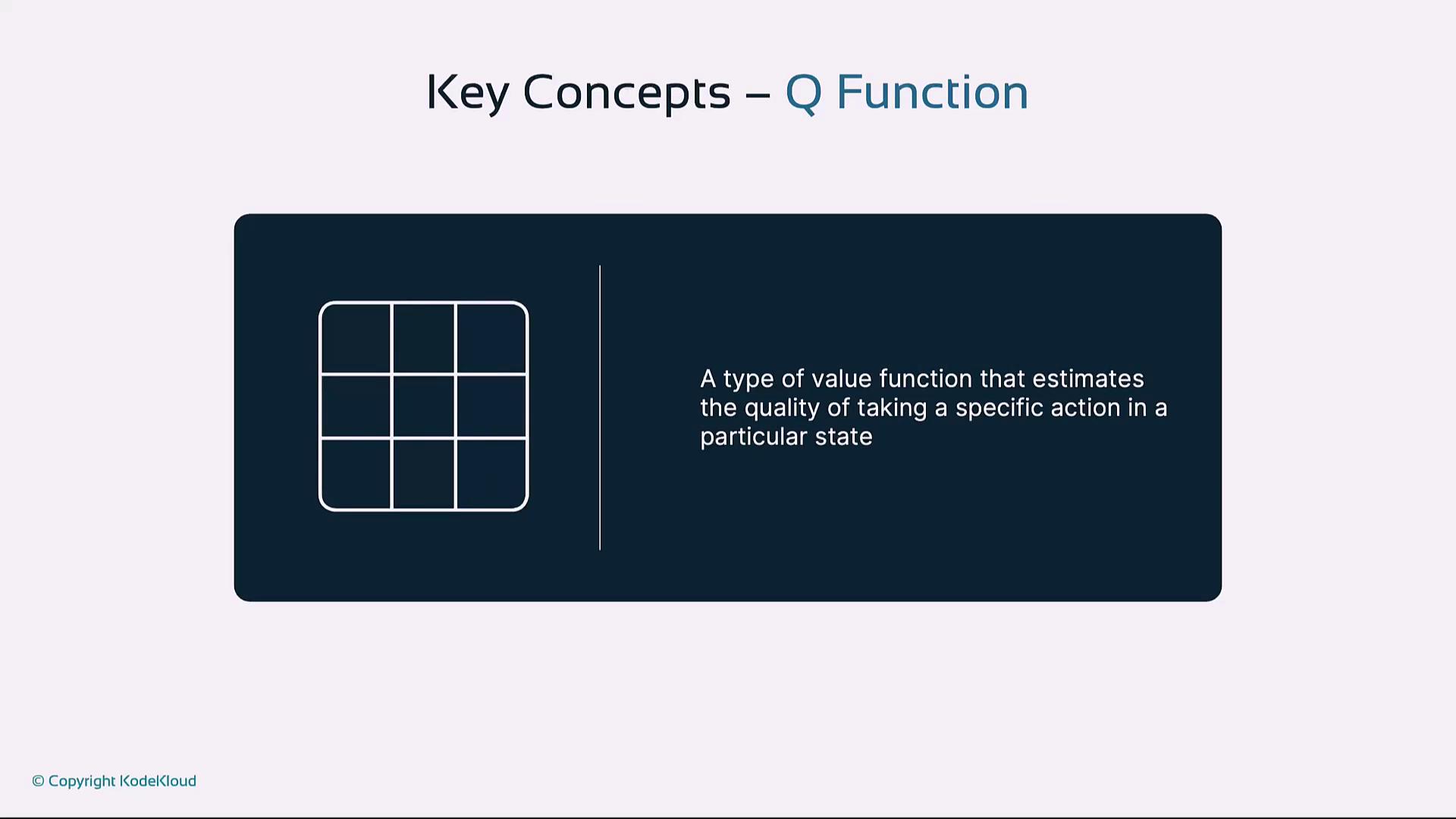
2. How Reinforcement Learning Works
At each time step:
- Agent observes state S
- Selects action A using policy π
- Environment returns reward R and next state S′
- Agent updates policy/value estimates to improve future returns
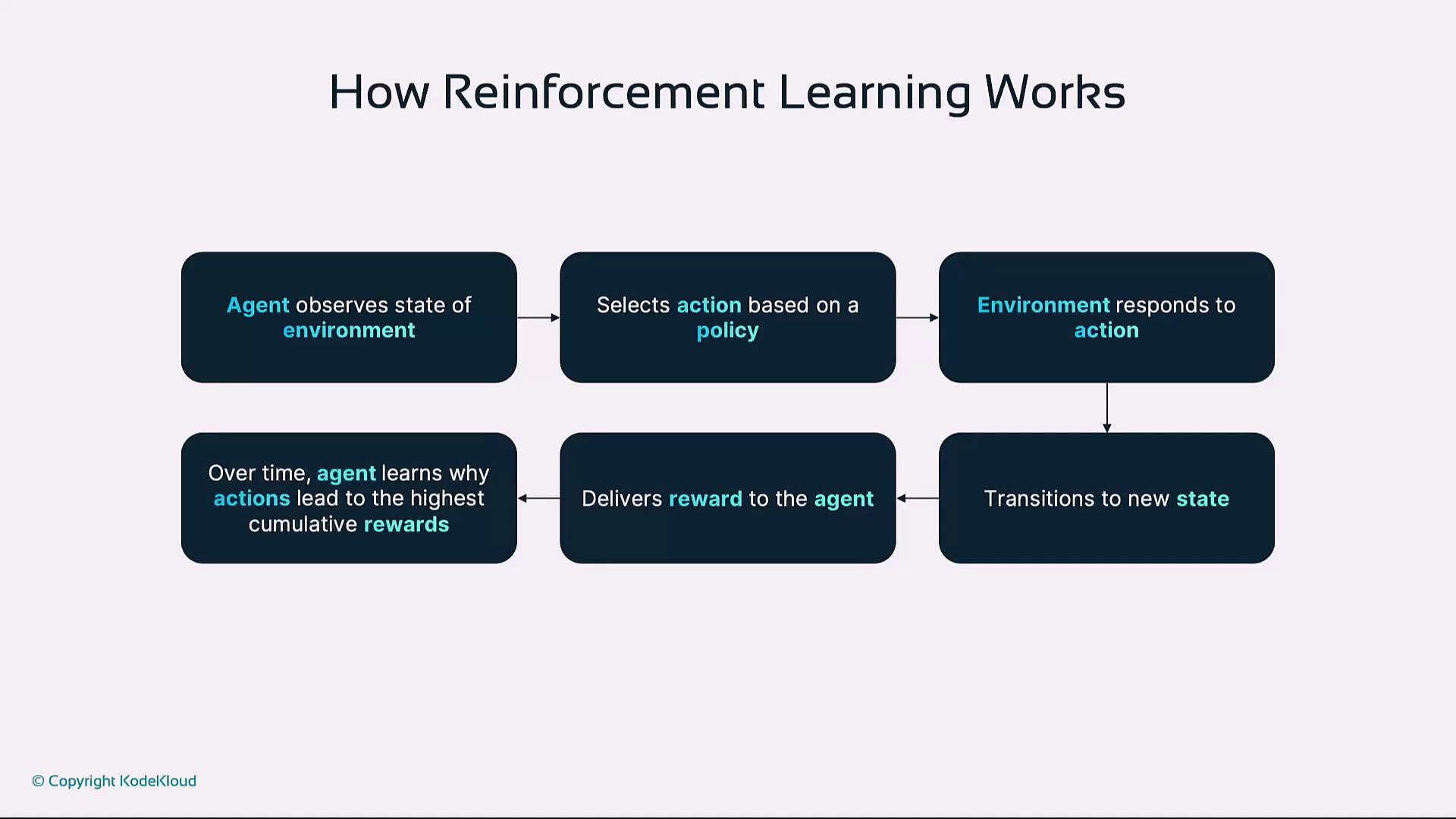
3. Markov Decision Processes
Reinforcement learning problems are often formalized as MDPs, defined by:
- States (S): All possible environment configurations
- Actions (A): Moves available to the agent
- Transition Function (T): Probability T(s, a, s′) of moving from state s to s′ after action a
- Reward Function (R): Immediate reward for each transition
- Discount Factor (γ): Importance of future rewards (0 ≤ γ ≤ 1)
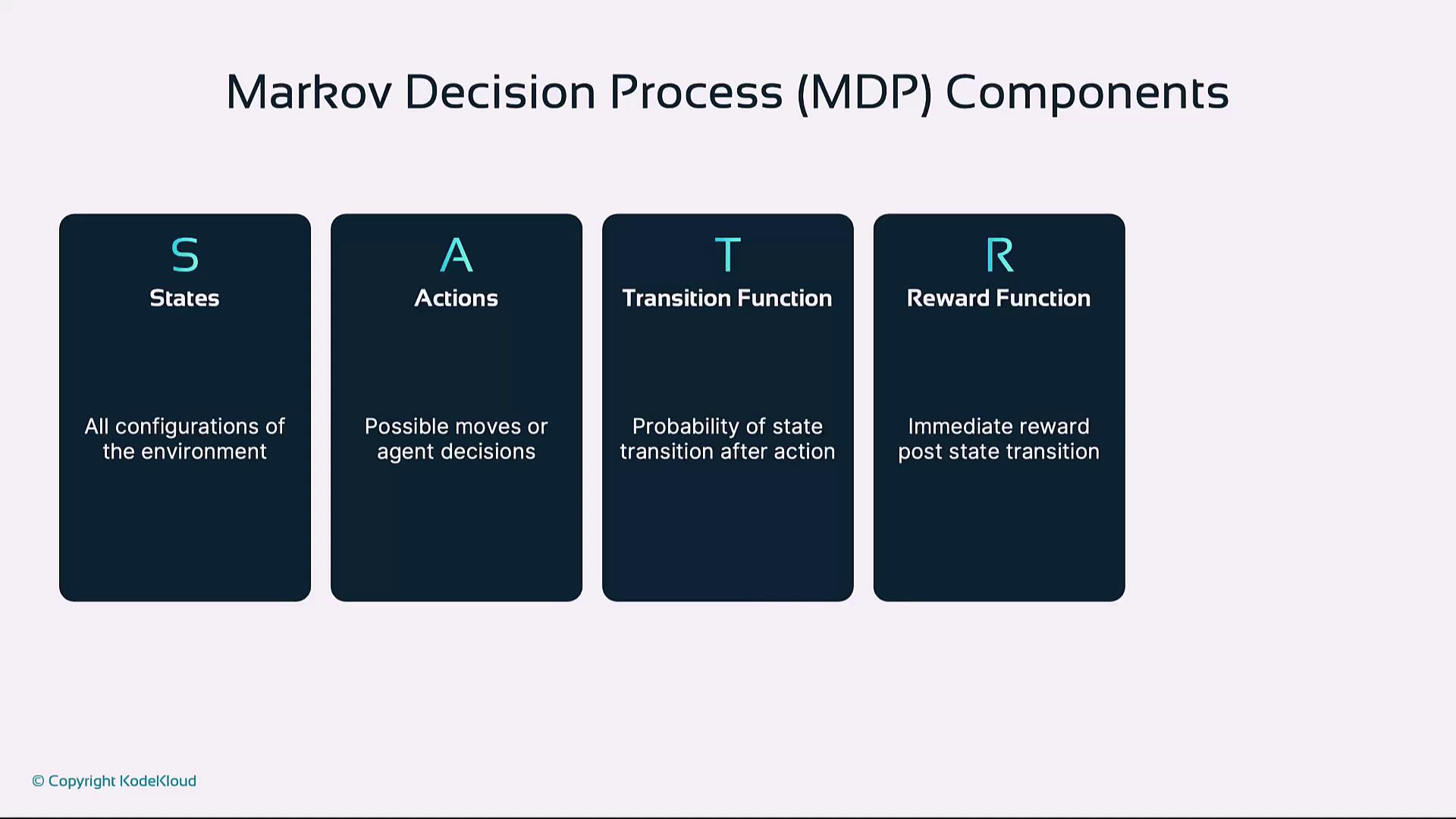
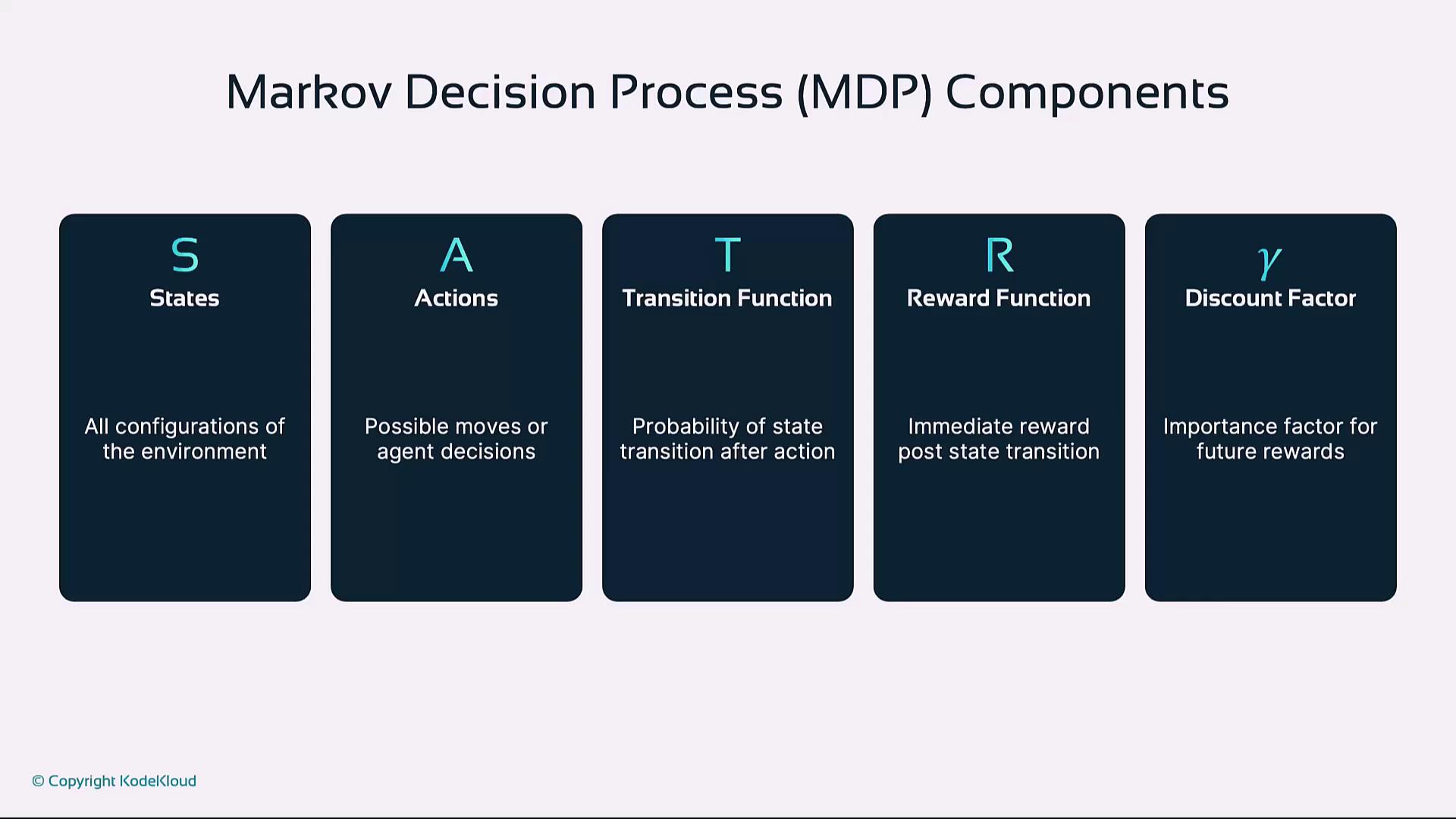
Note
MDP assumptions include the Markov property: the next state depends only on the current state and action.
4. Value-Based Methods
Value-based methods focus on estimating the value of states or actions, then choosing actions that maximize expected return.
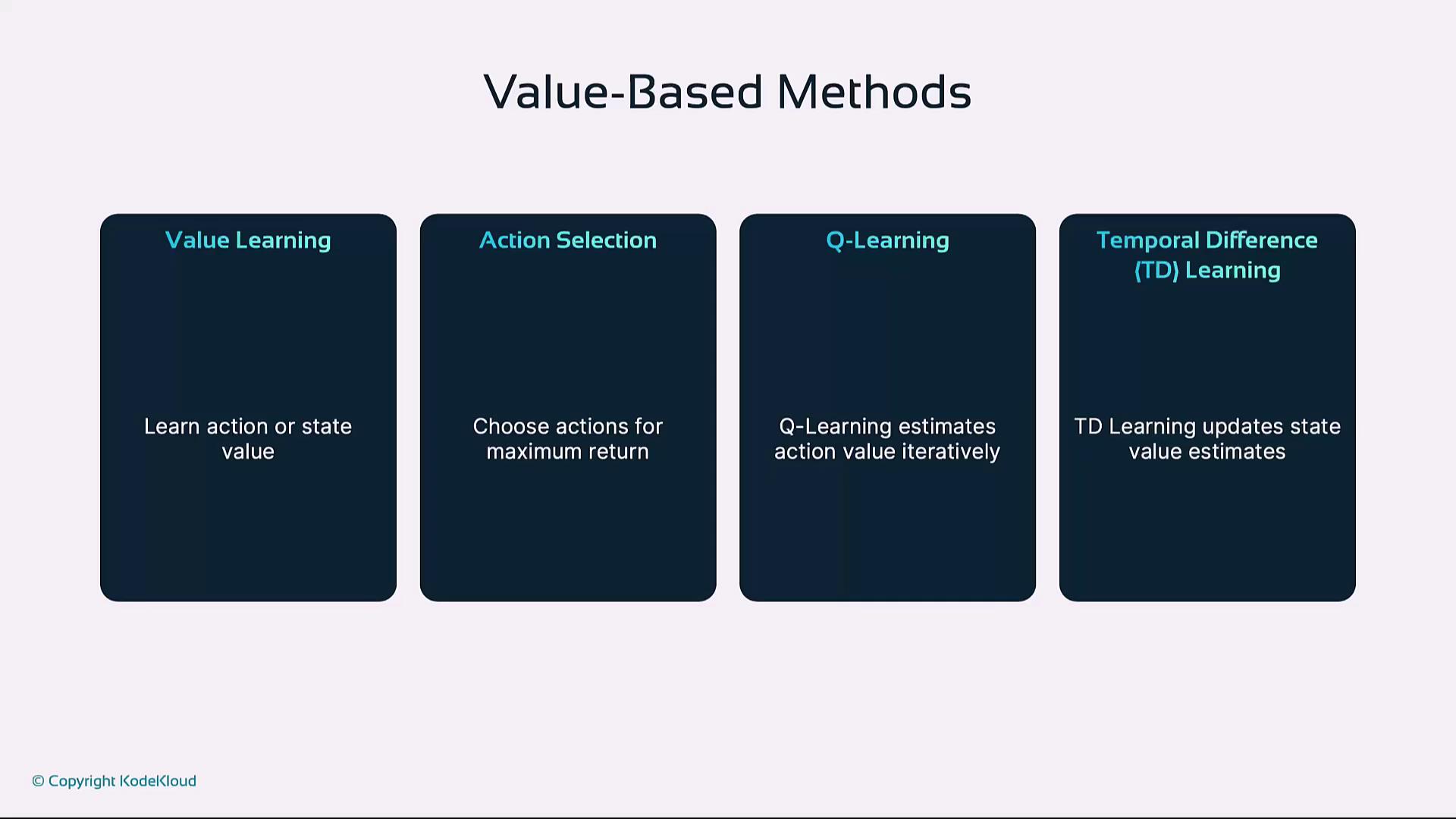
Q-Learning
Initialize Q-table Q(s, a) ← 0
For each episode:
Observe state s
Choose action a (e.g., ε-greedy)
Execute a, observe reward r and next state s′
Q(s, a) ← Q(s, a) + α [r + γ maxₐ′ Q(s′, a′) − Q(s, a)]
s ← s′
Repeat until convergence
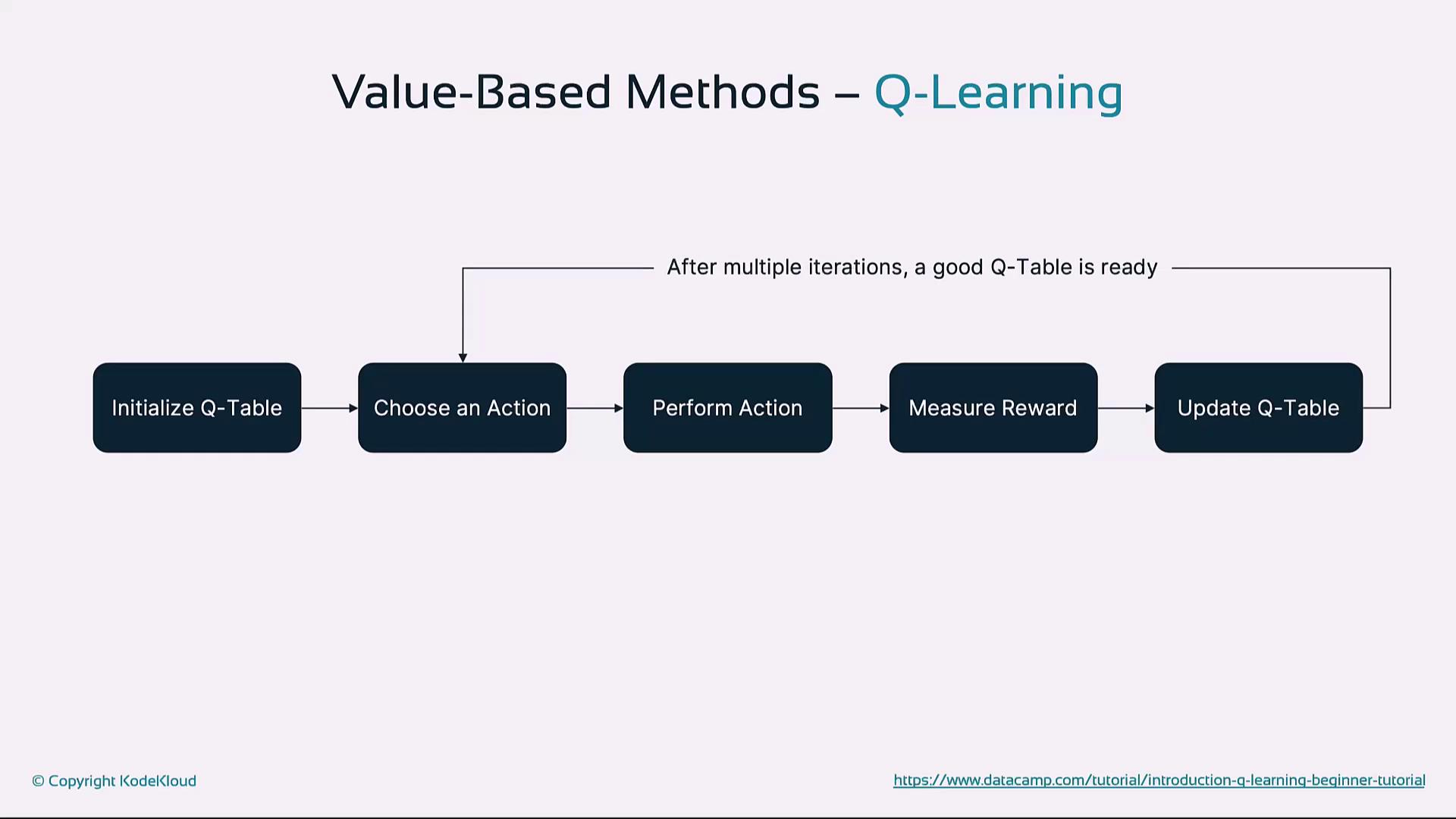
Temporal Difference Learning
V(s) ← V(s) + α [r + γ V(s′) − V(s)]
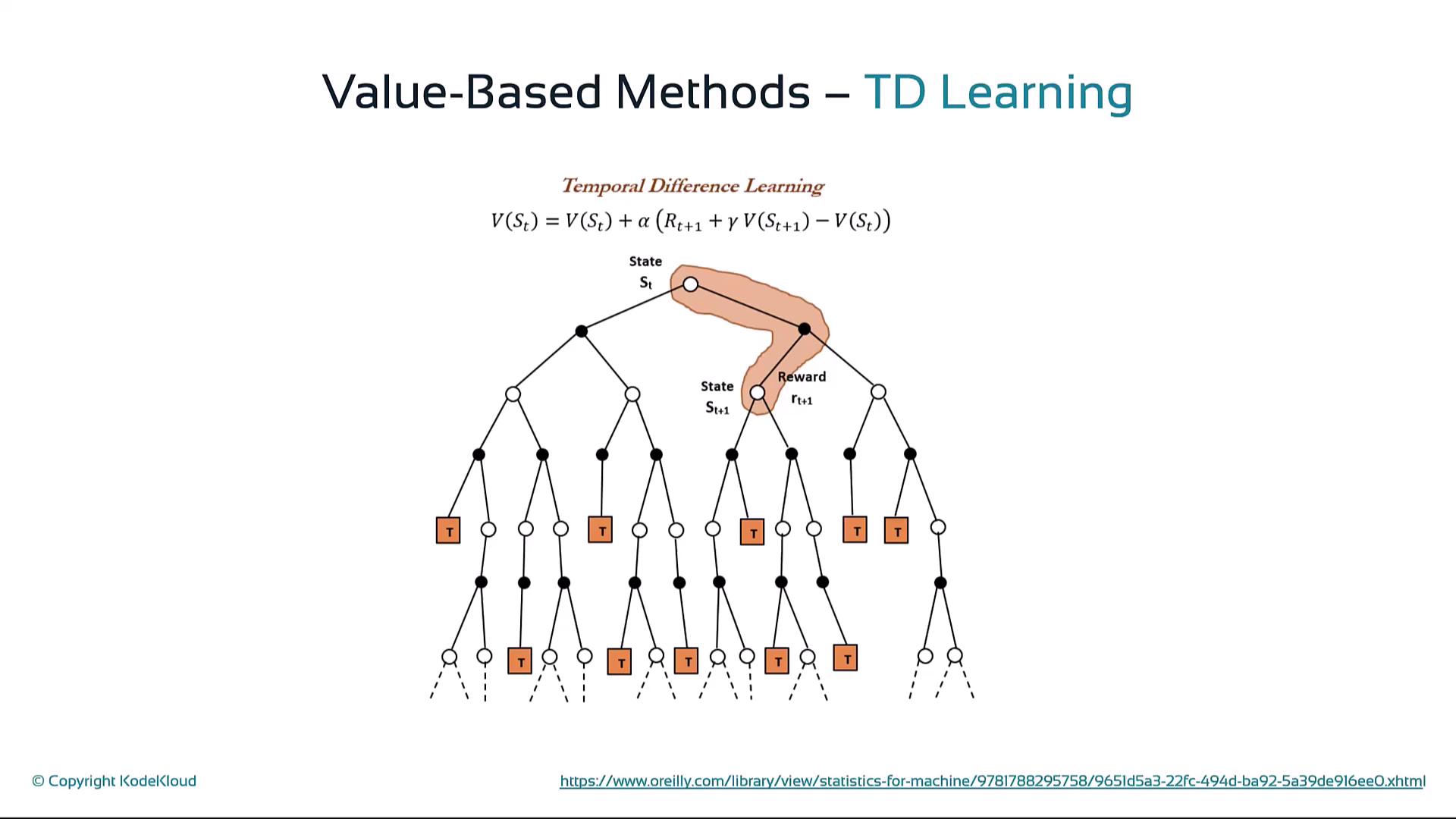
5. Policy-Based and Actor-Critic Methods
Policy-Based Methods
Directly optimize the policy π(a|s) without a separate value function. The policy gradient theorem:
∇_θ J(θ) ≈ E[∇_θ log π_θ(a|s) · Q^(s, a)]
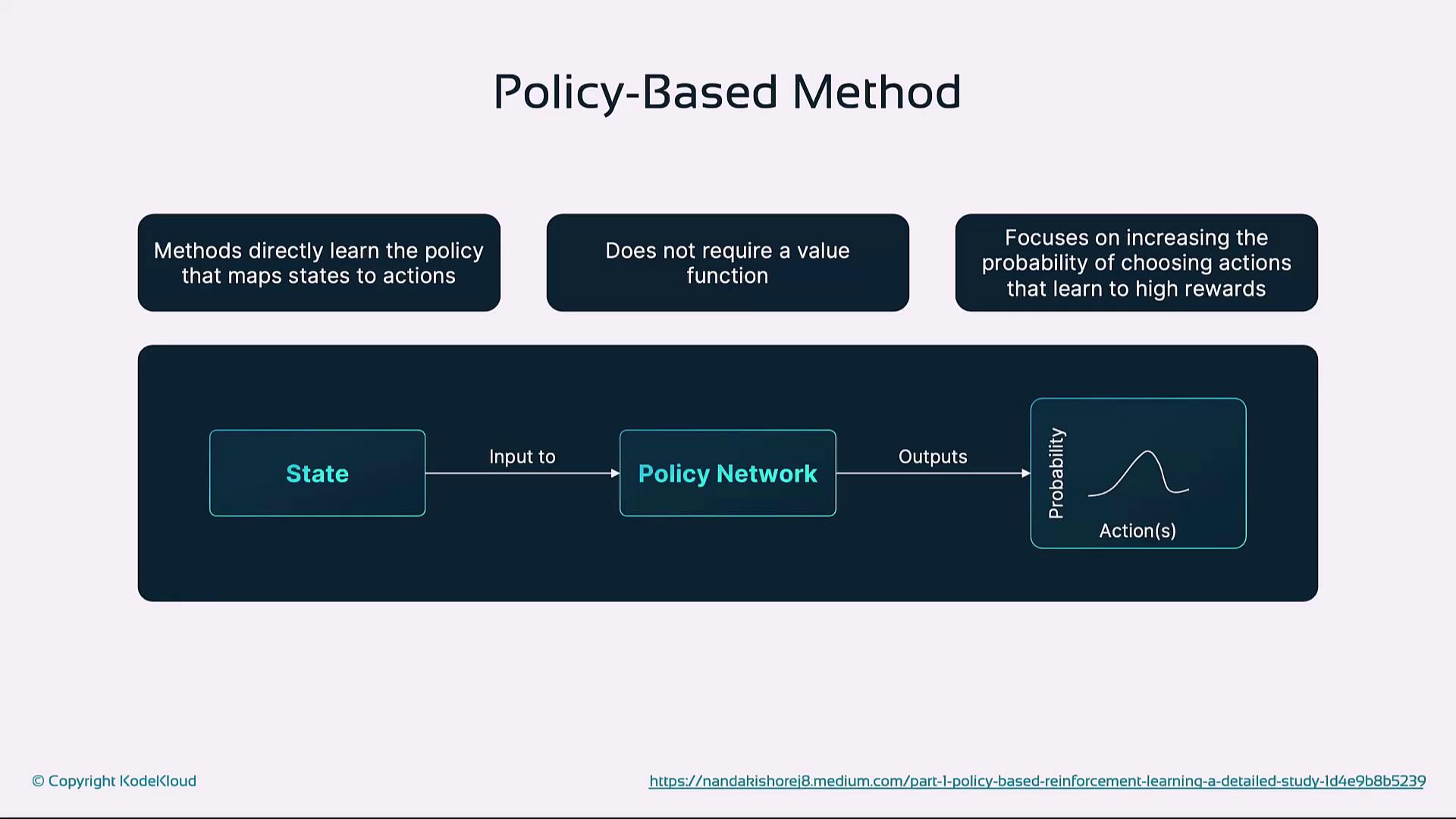
Actor-Critic Methods
Combine policy and value estimation:
- Actor: Suggests actions using policy π
- Critic: Evaluates actions via value or TD error
- Critic’s feedback updates both policy parameters θ and value estimates
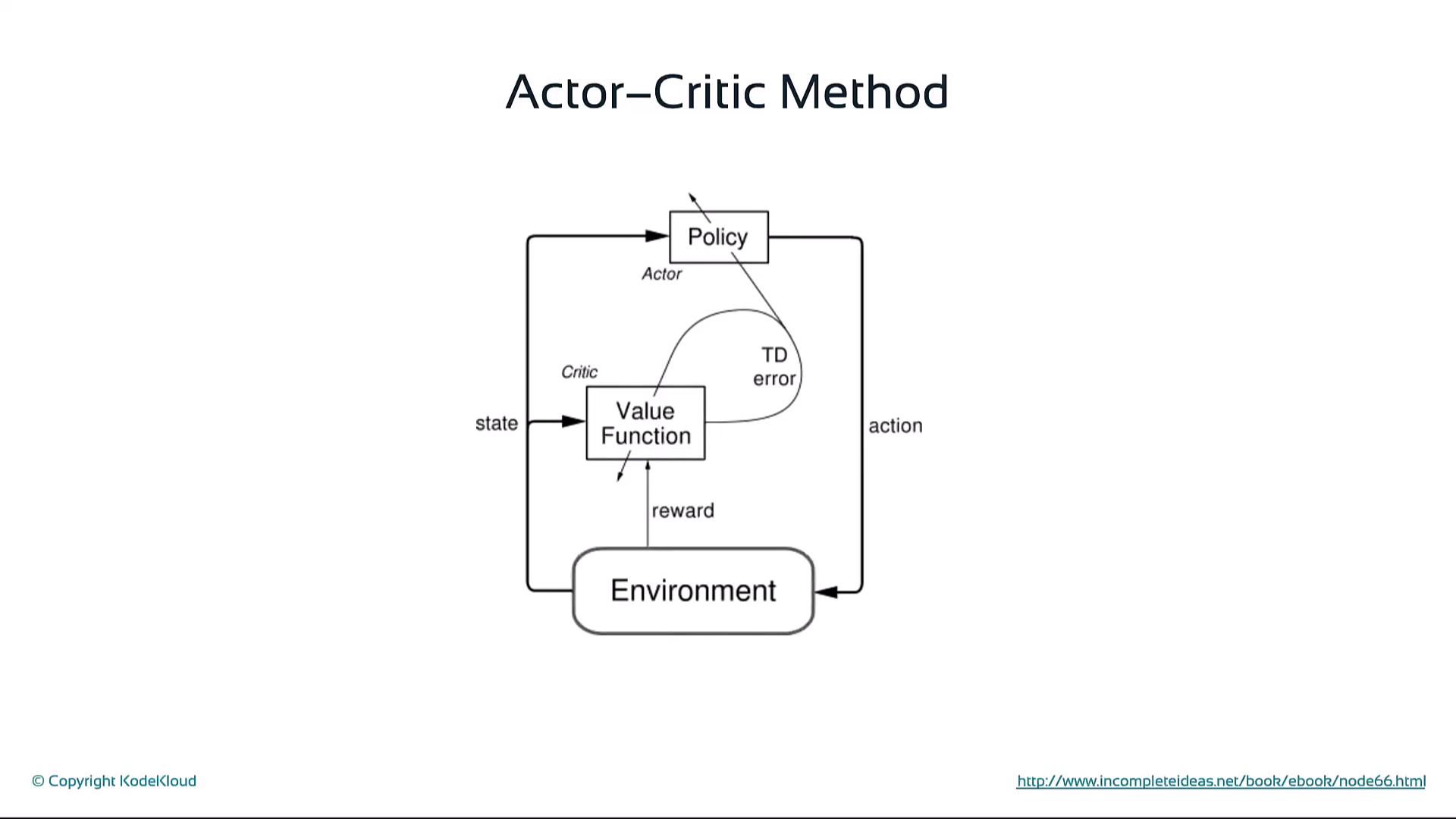
6. Applications of Reinforcement Learning
- Game AI: Deep Q-Networks (DQN) and AlphaGo
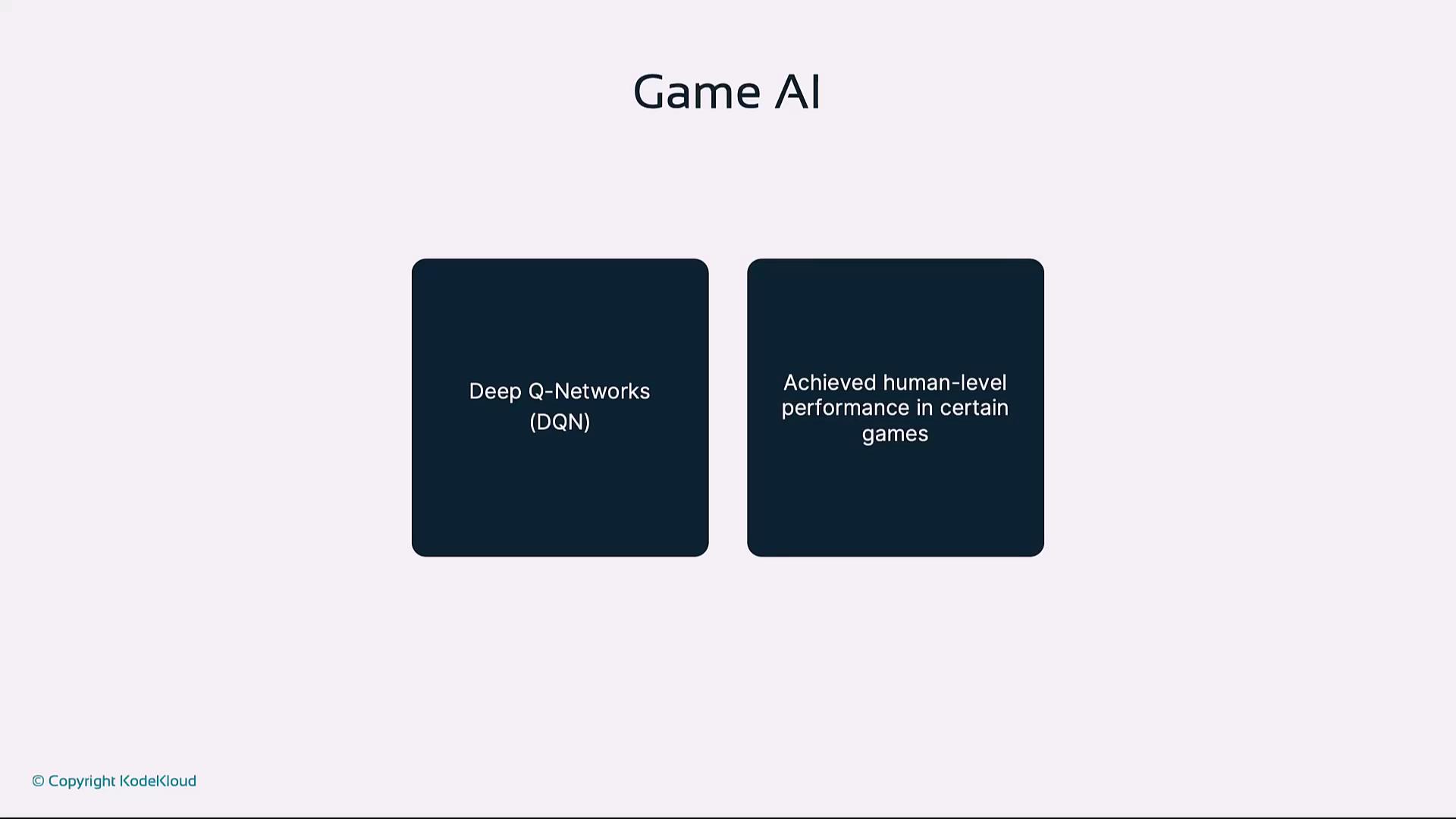
- Robotics: Grasping, locomotion, navigation through trial and error
- Autonomous Vehicles: Real-time decisions, obstacle avoidance, path planning
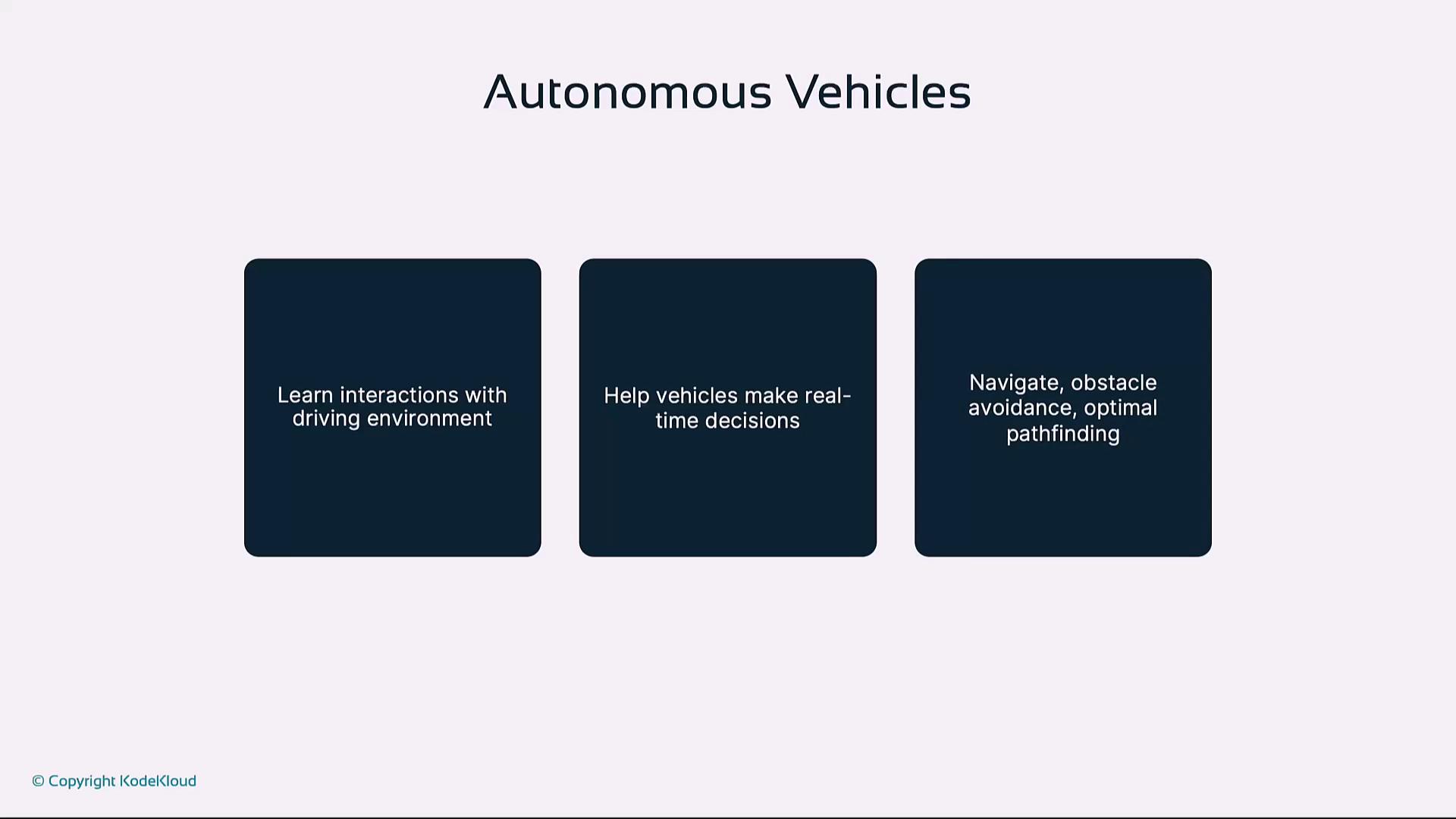
- Healthcare: Personalized treatment planning, dosage optimization, surgical assistance
7. Challenges
Sample Efficiency: RL often demands vast interactions, increasing compute cost.
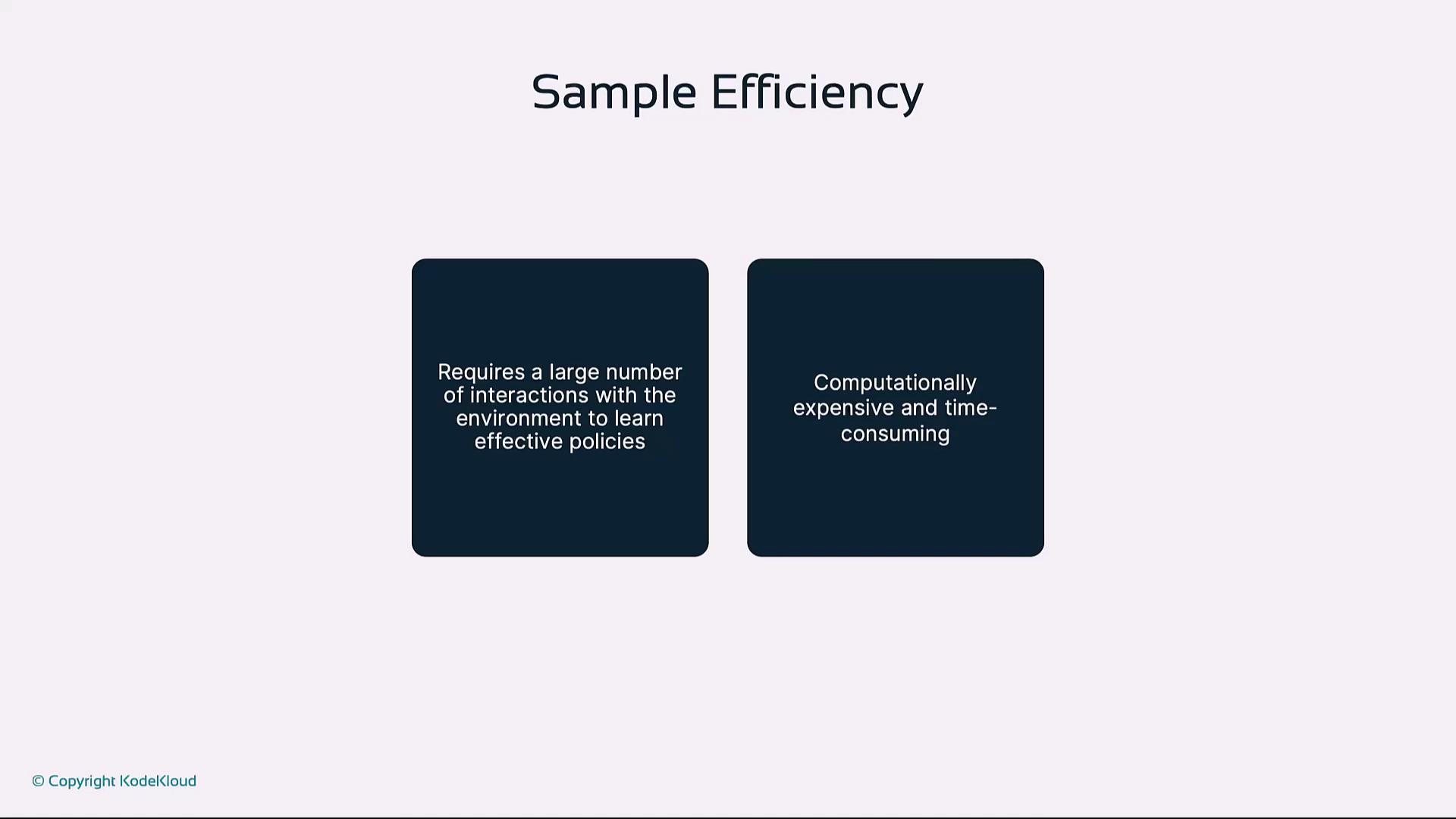
Exploration in Large State Spaces: Finding important states without exhaustive search is hard.
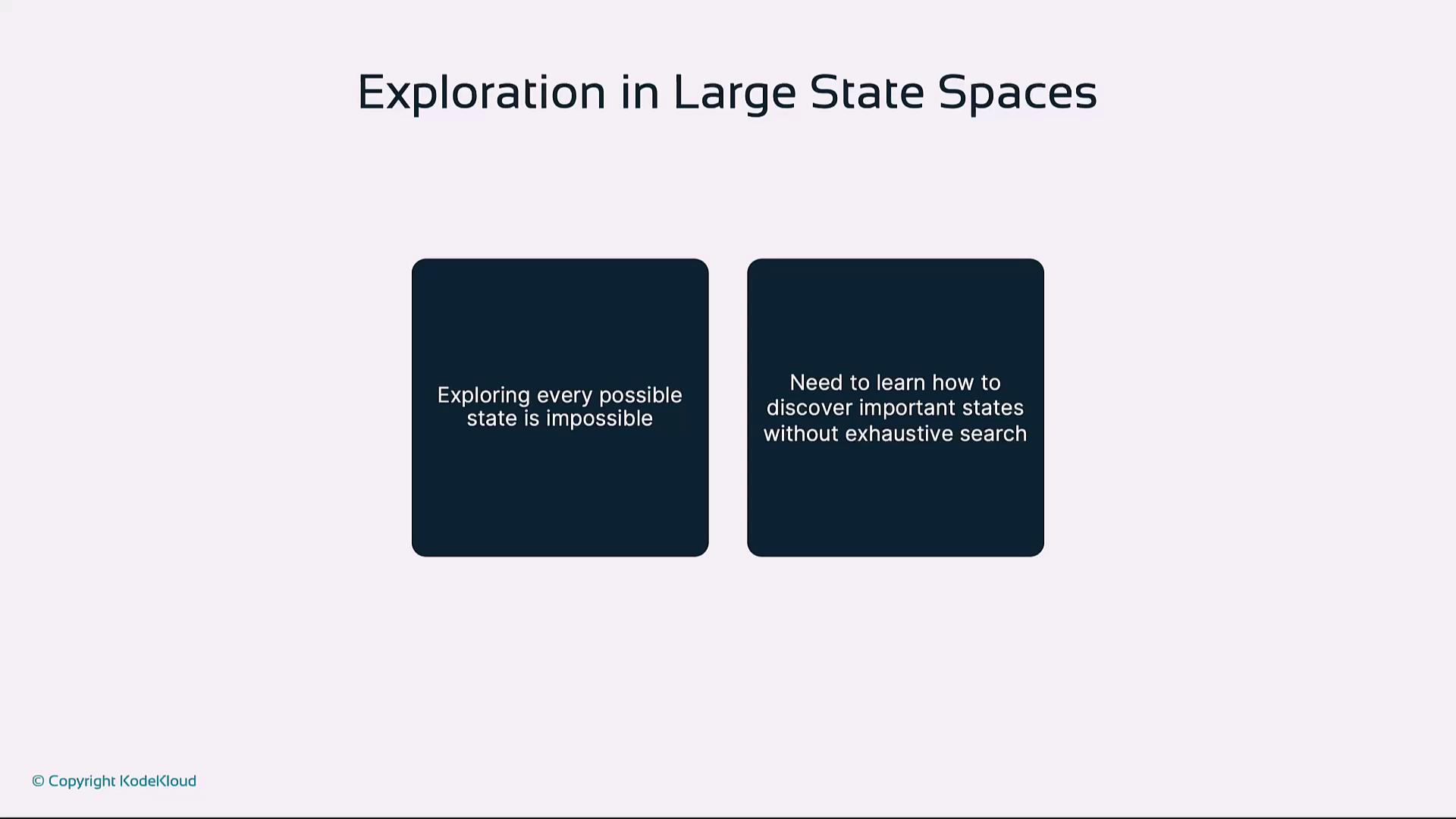
Warning
Poorly designed reward functions can lead to unintended or unsafe behaviors. Always validate and test reward shaping thoroughly.
- Reward Shaping: Crafting appropriate rewards is critical to guide learning.
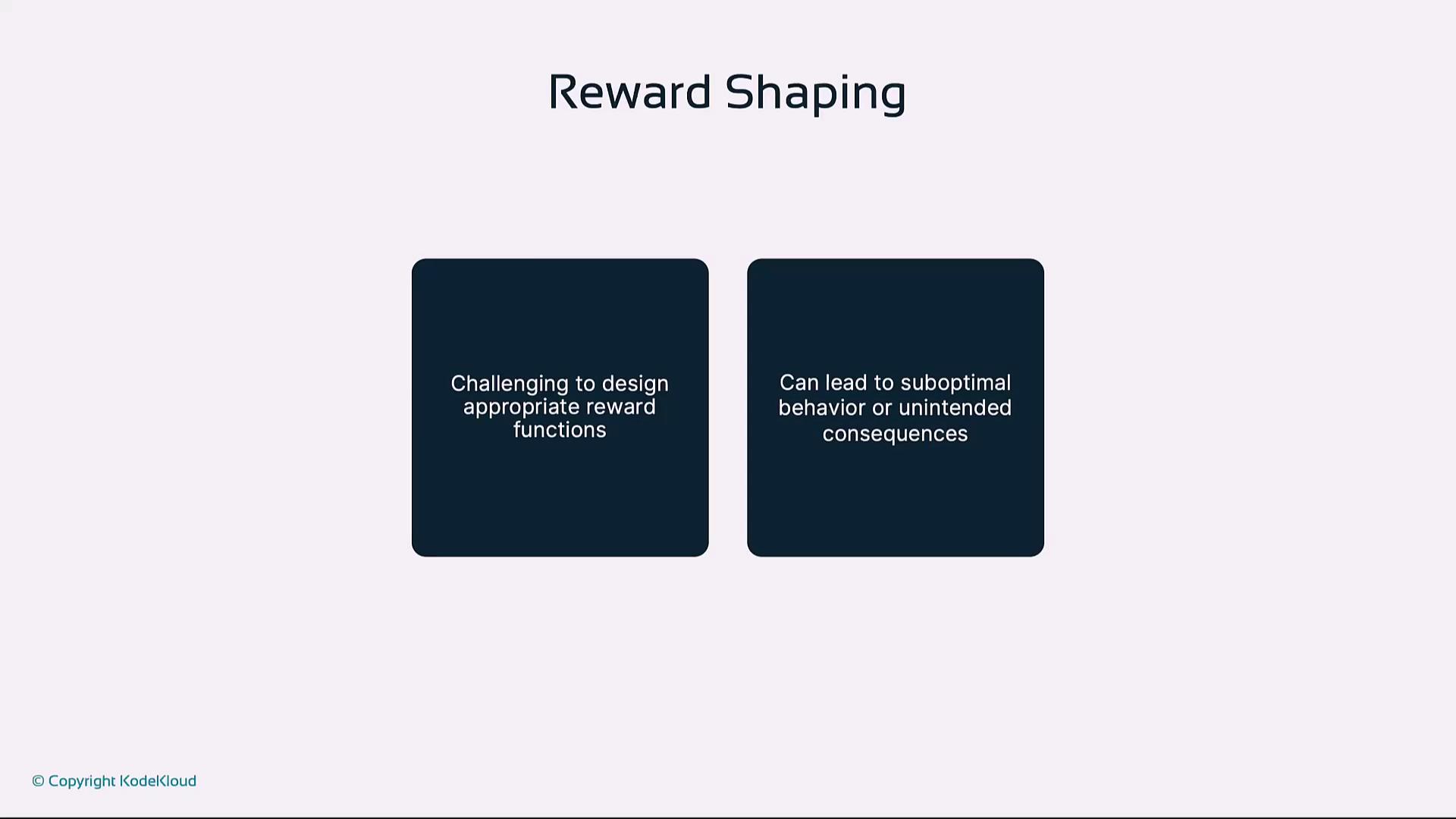
8. Future Directions
- Hybrid Paradigms: Integrate RL with supervised and unsupervised learning to improve efficiency.
- Real-World Deployment: Advance safety, scalability, and robustness for finance, logistics, and healthcare.
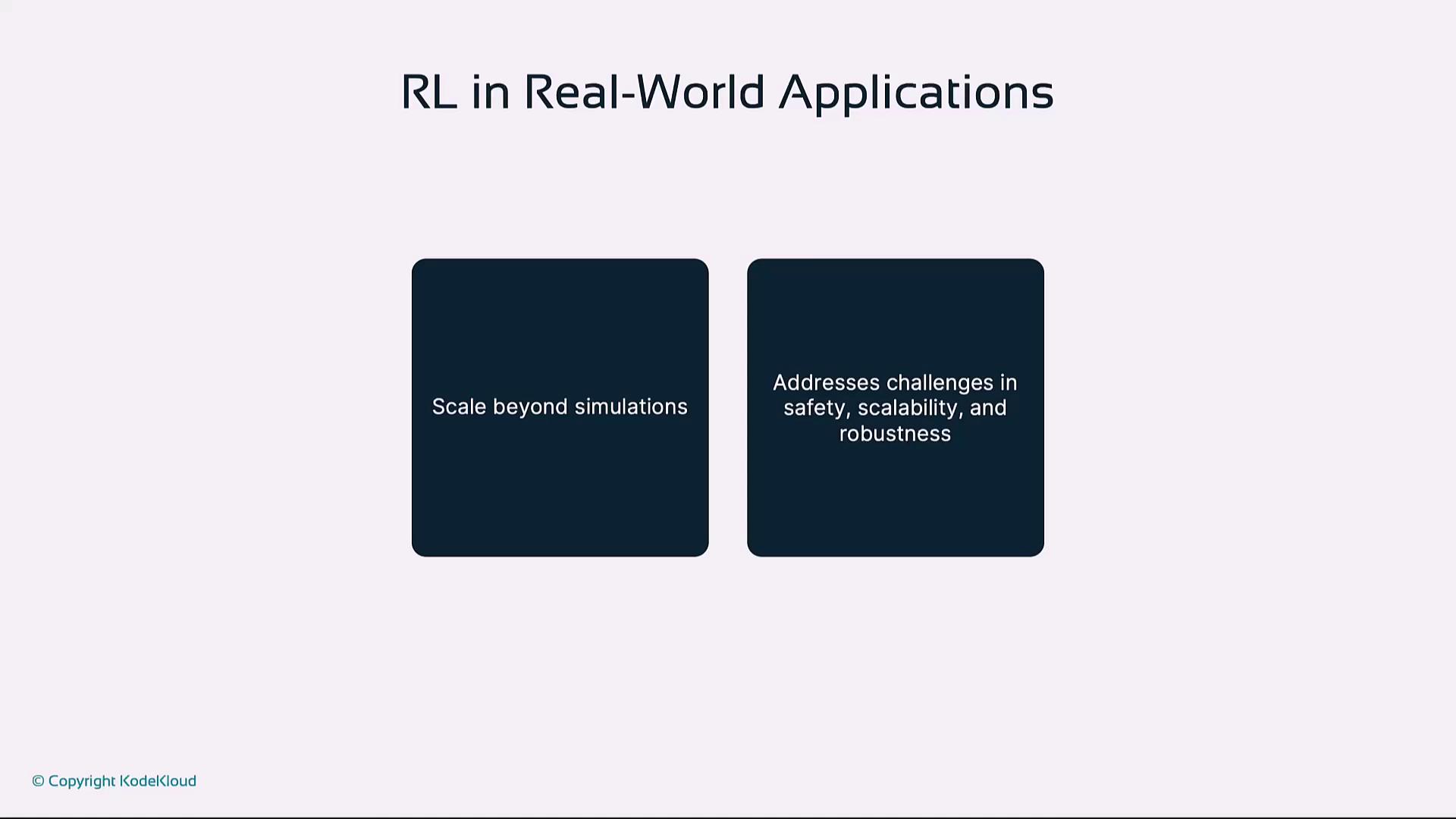
References
Watch Video
Watch video content